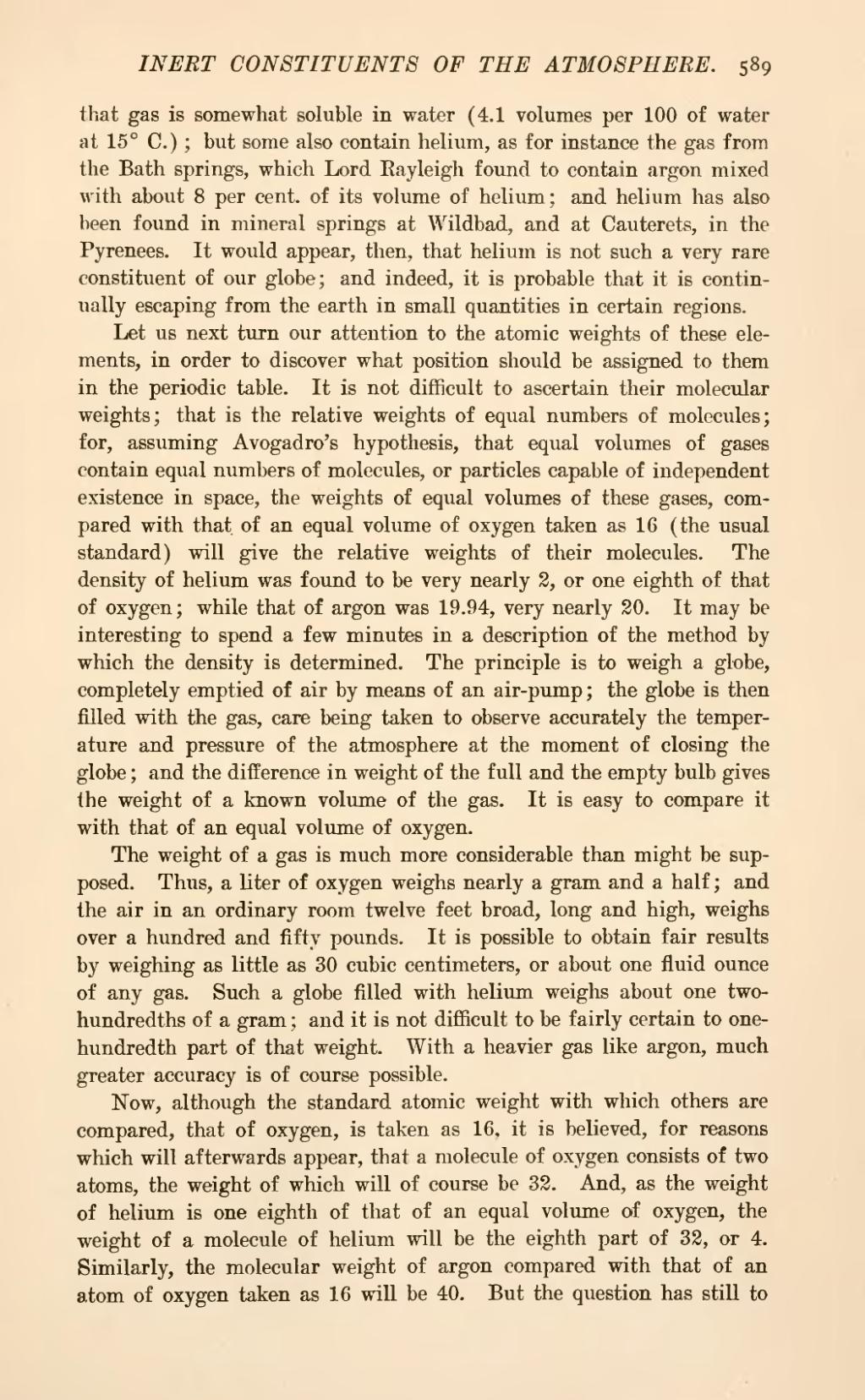that gas is somewhat soluble in water (4.1 volumes per 100 of water at 15° C.); but some also contain helium, as for instance the gas from the Bath springs, which Lord Rayleigh found to contain argon mixed with about 8 per cent, of its volume of helium; and helium has also been found in mineral springs at Wildbad, and at Cauterets, in the Pyrenees. It would appear, then, that helium is not such a very rare constituent of our globe; and indeed, it is probable that it is continually escaping from the earth in small quantities in certain regions.
Let us next turn our attention to the atomic weights of these elements, in order to discover what position should be assigned to them in the periodic table. It is not difficult to ascertain their molecular weights; that is the relative weights of equal numbers of molecules; for, assuming Avogadro's hypothesis, that equal volumes of gases contain equal numbers of molecules, or particles capable of independent existence in space, the weights of equal volumes of these gases, compared with that of an equal volume of oxygen taken as 16 (the usual standard) will give the relative weights of their molecules. The density of helium was found to be very nearly 2, or one eighth of that of oxygen; while that of argon was 19.94, very nearly 20. It may be interesting to spend a few minutes in a description of the method by which the density is determined. The principle is to weigh a globe, completely emptied of air by means of an air-pump; the globe is then filled with the gas, care being taken to observe accurately the temperature and pressure of the atmosphere at the moment of closing the globe; and the difference in weight of the full and the empty bulb gives the weight of a known volume of the gas. It is easy to compare it with that of an equal volume of oxygen.
The weight of a gas is much more considerable than might be supposed. Thus, a liter of oxygen weighs nearly a gram and a half; and the air in an ordinary room twelve feet broad, long and high, weighs over a hundred and fifty pounds. It is possible to obtain fair results by weighing as little as 30 cubic centimeters, or about one fluid ounce of any gas. Such a globe filled with helium weighs about one two-hundredths of a gram; and it is not difficult to be fairly certain to one-hundredth part of that weight. With a heavier gas like argon, much greater accuracy is of course possible.
Now, although the standard atomic weight with which others are compared, that of oxygen, is taken as 16, it is believed, for reasons which will afterwards appear, that a molecule of oxygen consists of two atoms, the weight of which will of course be 32. And, as the weight of helium is one eighth of that of an equal volume of oxygen, the weight of a molecule of helium will be the eighth part of 32, or 4. Similarly, the molecular weight of argon compared with that of an atom of oxygen taken as 16 will be 40, But the question has still to
